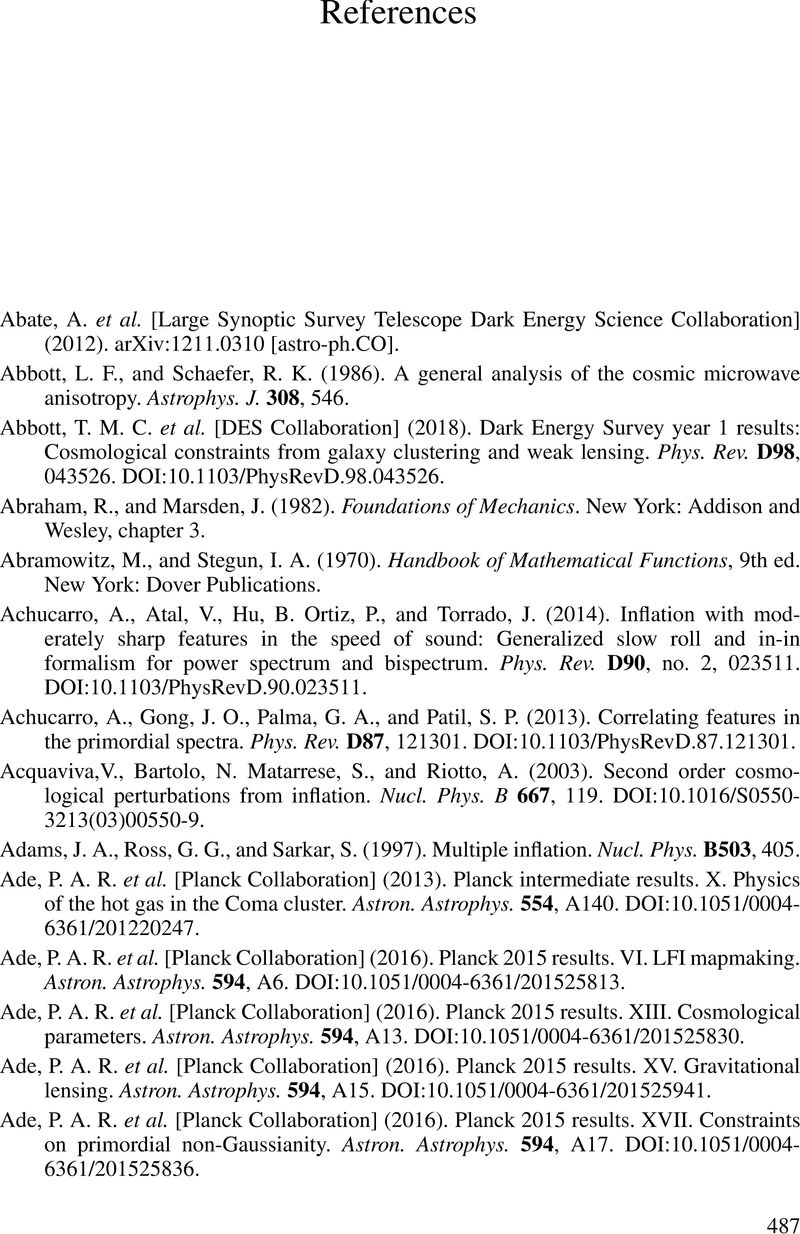Book contents
- Frontmatter
- Dedication
- Contents
- Preface
- 1 The Homogeneous and Isotropic Universe
- 2 Perturbation Theory
- 3 Initial Conditions
- 4 CMB Anisotropies
- 5 CMB Polarization and the Total Angular Momentum Approach
- 6 Non-Gaussianities
- 7 Lensing and the CMB
- 8 Observations of Large-Scale Structure
- 9 Cosmological Parameter Estimation
- 10 The Frequency Spectrum of the CMB
- Appendix 1 Fundamental Constants, Units and Relations
- Appendix 2 General Relativity
- Appendix 3 Perturbations
- Appendix 4 Special Functions
- Appendix 5 Special Functions
- Appendix 6 Mixtures
- Appendix 7 Statistical Utensils
- Appendix 8 Approximation for the Tensor Cℓ Spectrum
- Appendix 9 Boltzmann Equation in a Universe with Curvature
- Appendix 10 Perturbations of the Luminosity Distance
- References
- Index
- References
References
Published online by Cambridge University Press: 10 December 2020
- Frontmatter
- Dedication
- Contents
- Preface
- 1 The Homogeneous and Isotropic Universe
- 2 Perturbation Theory
- 3 Initial Conditions
- 4 CMB Anisotropies
- 5 CMB Polarization and the Total Angular Momentum Approach
- 6 Non-Gaussianities
- 7 Lensing and the CMB
- 8 Observations of Large-Scale Structure
- 9 Cosmological Parameter Estimation
- 10 The Frequency Spectrum of the CMB
- Appendix 1 Fundamental Constants, Units and Relations
- Appendix 2 General Relativity
- Appendix 3 Perturbations
- Appendix 4 Special Functions
- Appendix 5 Special Functions
- Appendix 6 Mixtures
- Appendix 7 Statistical Utensils
- Appendix 8 Approximation for the Tensor Cℓ Spectrum
- Appendix 9 Boltzmann Equation in a Universe with Curvature
- Appendix 10 Perturbations of the Luminosity Distance
- References
- Index
- References
Summary

- Type
- Chapter
- Information
- The Cosmic Microwave Background , pp. 487 - 497Publisher: Cambridge University PressPrint publication year: 2020



